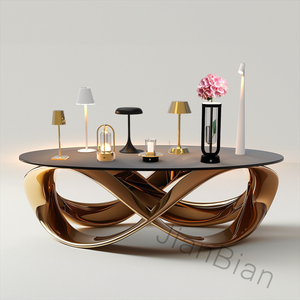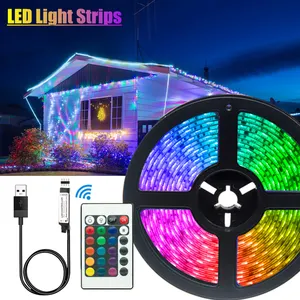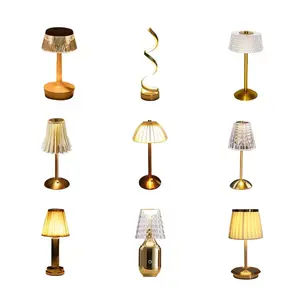(722309 products available)








































 Ready to Ship
Ready to Ship





 Ready to Ship
Ready to Ship





























 Ready to Ship
Ready to Ship

































































 Ready to Ship
Ready to Ship












































































 Ready to Ship
Ready to ShipLamp 2 comes in different types; below are the common ones:
LED lamps
LED lamps are light sources that use light-emitting diodes to produce light. These lamps are popular for their long lifespan and energy efficiency. They come in different shapes and sizes and can be used for various applications, from industrial lighting to decorative lamps.
CFL lamps
Compact fluorescent lamps, popularly known as CFL lamps, are energy-saving bulbs. They consume less energy than incandescent bulbs. These lamps have a longer lifespan compared to incandescent lamps. They are made with a tube that is bent into a spiral or other shape that is compact.
Halogen lamps
These lamps are a type of incandescent lamp. They are filled with gases like iodine or bromine. Halogen lamps use tungsten for their filaments. Their lamps produce a bright white light, and they are commonly used for outdoor lighting and in cars.
Smart lamps
These are advanced lighting devices designed to work with modern smart homes. They come with advanced features that improve convenience and energy efficiency. For instance, they can be controlled remotely by using a smartphone or voice assistant.
Fluorescent lamps
These lamps produce light by using a gas that is mercury vapor. The fluorescent lamps are more energy efficient than incandescent lamps. They are commonly used for commercial and industrial lighting. Also, they can be used for residential lighting.
Metal halide lamps
These are high-intensity discharge lamps. They produce light by passing electricity through a gas that contains metal. These lamps produce a bright, white light. They are used in spaces that require a lot of light, like stadiums and street lighting.
Neon lamps
Neon lamps are a type of gas discharge lamp. They produce light by passing electricity through a gas that is neon. These lamps are known for their bright and colorful lights. They are commonly used for signs and advertisements.
Incandescent lamps
These lamps produce light by heating a wire filament until it glows. They are known for producing a warm light. However, they are not as energy efficient as the other lamps discussed above.
LED _lamp 2_ is a source of light that has become popular among people due to its long-lasting ability to provide light and energy efficiency. Below are some features and functions of LED lamps.
Long lifespan
LED lamps have a long lifespan of up to 50,000 hours. This means they can be used for many years before they burn out. This long lifespan reduces the need to replace the lamp frequently, which saves time and money. This makes them a convenient choice for areas that are hard to reach.
Energy efficiency
LED lamps consume less power than traditional bulbs. They use about 70 to 90 percent less energy than incandescent lamps. Reduced energy consumption leads to lower electricity bills, making LED lamps more cost-effective. They are also environmentally friendly because they help conserve energy.
Brightness and color options
Lamp 2 comes in different colors and brightness levels. Some have a warm, soft yellow light that feels like the old bulbs. Others have a cool, bright white light for when people need to see better. Warm white lights are good for relaxing rooms. Cool white lights are great for kitchens and reading areas. The color options range from 2700 kelvins to 6500 kelvins.
Dimming capabilities
Some LED lamps can have their brightness changed. This is called dimming. Dimming can make the lights as bright as people want. Dimming the lights can also save energy when people don't need the lights to be very bright. Not all LED lamps can be dimmed, but the ones that can work with special dimmer switches.
Directional lighting
LED lamps give light in one direction. This is useful for when people want the light focused on a certain spot. For example, LED spotlights or recessed ceiling lights shine the light straight down where the beam is pointed. This helps illuminate areas without wasting light everywhere else. Directional lighting also makes the spots that the light hits look brighter and more interesting.
LED floodlight lamps are versatile and applicable in various industries and sectors. The following are key industries that commonly source floodlight lamps in bulk:
Construction and Real Estate
In the construction industry, project managers and site engineers source floodlight lamps to provide illumination in building sites, especially during night operations. In commercial and residential property construction, builders use floodlight lamps for lighting up outdoor areas like parking lots, walkways, and landscapes.
Sports and Entertainment
Stadium and arena managers source floodlight lamps to provide high-intensity lighting for events such as concerts, sports activities, and theatrical performances. Event organizers and companies also source floodlight lamps for temporary lighting solutions in outdoor events and festivals.
Manufacturing and Warehousing
Manufacturers and warehouse operators use floodlight lamps for general lighting in production facilities and storage spaces. Floodlight lamps provide adequate lighting for operations such as material handling, inventory management, and product packaging.
Retail and Commercial
Retail stores and shopping malls use floodlight lamps to illuminate outdoor areas like entrances, parking lots, and walkways to enhance security and aesthetics. Moreover, restaurants, hotels, and resorts utilize floodlight lamps for outdoor lighting in areas such as gardens, patios, and exteriors.
Infrastructure and Public Services
Municipalities and government agencies source floodlight lamps to illuminate streets, highways, and public spaces. This enhances visibility and safety for pedestrians and vehicles. Additionally, airport authorities use floodlight lamps for runway, taxiway, and perimeter lighting.
Energy and Utilities
In the oil, gas, and mining industries, floodlight lamps are used for site illumination, equipment lighting, and emergency lighting. Floodlight lamps are crucial in exploration, extraction, and processing activities. Furthermore, power plants and energy facilities utilize floodlight lamps for lighting in outdoor areas and equipment illumination.
Emergency and Rescue Operations
Fire departments, paramedics, and rescue teams use floodlight lamps for high-intensity lighting in emergency response, rescue missions, and medical assistance. Additionally, military and defense organizations utilize floodlight lamps for tactical operations, surveillance, and perimeter security.
Manufacturing and Industrial
Manufacturing plants, factories, and industrial facilities use floodlight lamps for general lighting in production areas, warehouses, and outdoor spaces. Floodlight lamps offer high lumen output required for industrial operations.
When purchasing lamp 2 wholesale, buyers should consider various factors to ensure they meet their customers' needs. Here are some of them:
Type of Lamp
Lamps come in different types. Buyers should stock different types of lamps such as desk lamps, floor lamps, table lamps and wall lamps to cater to various customers' preferences and needs.
Power Source
Lamps can be powered by different energy sources. Some are powered by electricity, batteries or solar energy. Energy powered lamps are convenient and can be used in different environments.
Design and Style
Customers prefer lamps that complement their room decor. It is important to choose lamps in various designs and styles from modern, minimalist to traditional and ornate. This will enable buyers to cater to distinct customers' aesthetic preferences.
Material and Build Quality
Business owners should select lamps made of various materials such as metal, wood and plastic. They should also ensure the lamps are constructed with high quality material to enhance durability.
Adjustability and Features
Various types of adjustable lamps come with unique features. For instance, some have adjustable arms or dimmable options. Buyers should choose lamps with different features to meet their customers' needs.
Compatibility and Bulb Type
Lamps can be compatible with different types of bulbs. Business owners should choose lamps compatible with various types of bulbs such as LED, incandescent and CFL. This will offer customers more options to choose from.
Brand Reputation
Business owners should buy lamps from reputable brands. They can read reviews and testimonials to get insight about the brand's product quality and performance. Lamps from reputable brands are likely to offer better customer service and product warranty.
Price and Warranty
Business owners should find a balance between quality and pricing when purchasing lamps. They should avoid extremely low prices that are likely to indicate poor quality. Also, they should consider brands that offer competitive pricing on their lamps. Business owners should also consider brands that offer product warranty and after sales services.
Q: What is the average lifespan of a lamp2?
A: Lamp2 lifespan varies depending on the type. For instance, incandescent lamps last between 750 to 1000 hours. On the other hand, LED lamps have a lifespan of up to 25000 to 50000 hours. As such, LEDs require less frequent replacement than incandescent and halogen lamps.
Q: What are the common types of lamp2?
A: There are several types of lamps. These include incandescent lamps, LED lamps, and fluorescent lamps. Each of these lamps has unique characteristics, advantages, and disadvantages. For instance, LEDs are popular for their energy efficiency and long lifespan. In contrast, incandescent lamps are known for producing warm light but are less energy efficient.
Q: What are the common lamp2 sizes?
A: Lamps come in different sizes and shapes. The size of a lamp depends on its type and usage. For instance, LED lamps are available in sizes ranging from 4 to 40 millimeters. On the other hand, incandescent lamps range from 15 to 25 millimeters in size. Additionally, lamps can be categorized according to their bulbs, such as A19, A60, and E27 lamps.